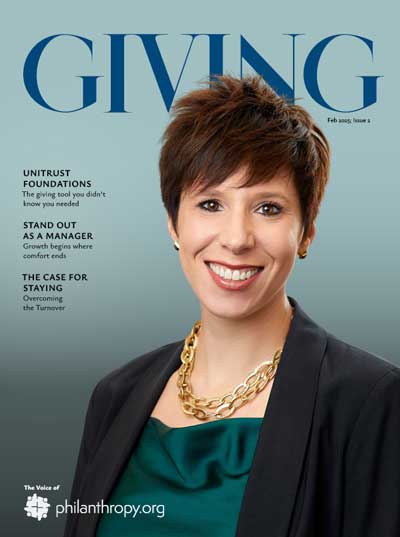Originally published in September 2012. Updated in 2025.
How Internal Silos Hurt Donor Relationships and Revenue
Summary: Many organizations still operate under the outdated belief that planned giving cannibalizes annual giving. In reality, donors who commit to legacy gifts often increase their annual contributions. This post explores the importance of cross-departmental collaboration and how to unlock the full value of loyal donors by embracing a donor-centered approach.
The Question We Received
We were recently asked a practical and pressing question:
Is there any benchmark or industry standard regarding the mechanics of handing off a loyal direct mail donor to the Planned Giving Department?
Without airing too much dirty laundry, our in-house Direct Marketing Department refuses to give the Planned Giving Department access to the donor database out of fear that planned giving marketing activities with loyal donors will depress annual giving income. So basically, the Planned Giving Department is being denied access to the best prospects because of fear that planned giving will undermine annual giving.
The Common Misconception
Our response from the late Brian M. Sagrestano:
Many nonprofits fall for the false notion that charitable giving is a finite pie—and that offering a donor the opportunity to make a bequest will somehow reduce what they’re willing to give to the annual fund.
In reality, the opposite is true.
The 2007 study Bequest Donors: Demographics and Motivations of Potential and Actual Donors, conducted by the Center on Philanthropy at Indiana University, found that donors who include a charity in their estate plans are not only more loyal but also give larger annual gifts than those who don’t.
In fact, annual donations from legacy donors were twice the size of those made by non-legacy donors. When donors deepen their connection with your mission through a planned gift, their overall investment grows—both emotionally and financially.
Donor-Centered Giving Is the Future
In today’s multi-channel, donor-centered landscape, the idea of “protecting” donors from other departments is outdated and counterproductive. Holding donor names hostage only leads to missed opportunities and declining support.
It’s time to shift from seeing donors as short-term revenue streams to viewing them as mission partners with long-term philanthropic goals.
Organizations that embrace this mindset are thriving. Those that don’t will likely face declining annual giving over time—especially as Boomers retire and younger generations step into their philanthropic roles.
Younger Donors Demand More
Millennials and Gen X donors approach giving differently than their parents and grandparents. They want to:
- See tangible impact from their gifts
- Align with causes that reflect their values
- Get involved beyond writing a check—often as volunteers or advocates
They’re not interested in unrestricted giving unless they feel connected to the cause and see clear results. That’s why it’s critical to nurture relationships holistically, rather than limiting communication to one department.
Fear Is Fueling Decline
Your annual fund team may be clinging to loyal donors because they sense a decline in giving—and they fear that sharing those names will accelerate the problem.
But here’s the truth: the more you hold onto donor names, the faster your decline will come.
Why? Because donors evolve. If you’re not growing with them—offering ways to make a bigger impact and connect deeply—they’ll drift elsewhere. Cross-pollinating efforts across departments is the key to keeping donors engaged.
Successful Charities Share
Today’s high-performing nonprofits don’t hoard data—they share it. Development, annual fund, and planned giving teams coordinate efforts and speak with one voice. They understand that a loyal donor isn’t a turf war—they’re an opportunity for deeper engagement and long-term support.
Collaboration ensures multiple points of contact and helps donors feel heard, valued, and invested in the organization’s future. And the result? Stronger loyalty. Bigger gifts. And a mission that grows.
Key Takeaways
- Legacy donors give more: Planned giving boosts, rather than undermines, annual giving.
- Donor-centric strategies win: Modern donors want impact, involvement, and long-term relationships.
- Collaboration is essential: Siloed departments stifle growth and alienate your best supporters.
- Fear holds you back: Transparency and internal cooperation lead to stronger outcomes.
If your nonprofit is still operating with internal walls, it’s time to tear them down. Donors don’t think in silos—and neither should you.



